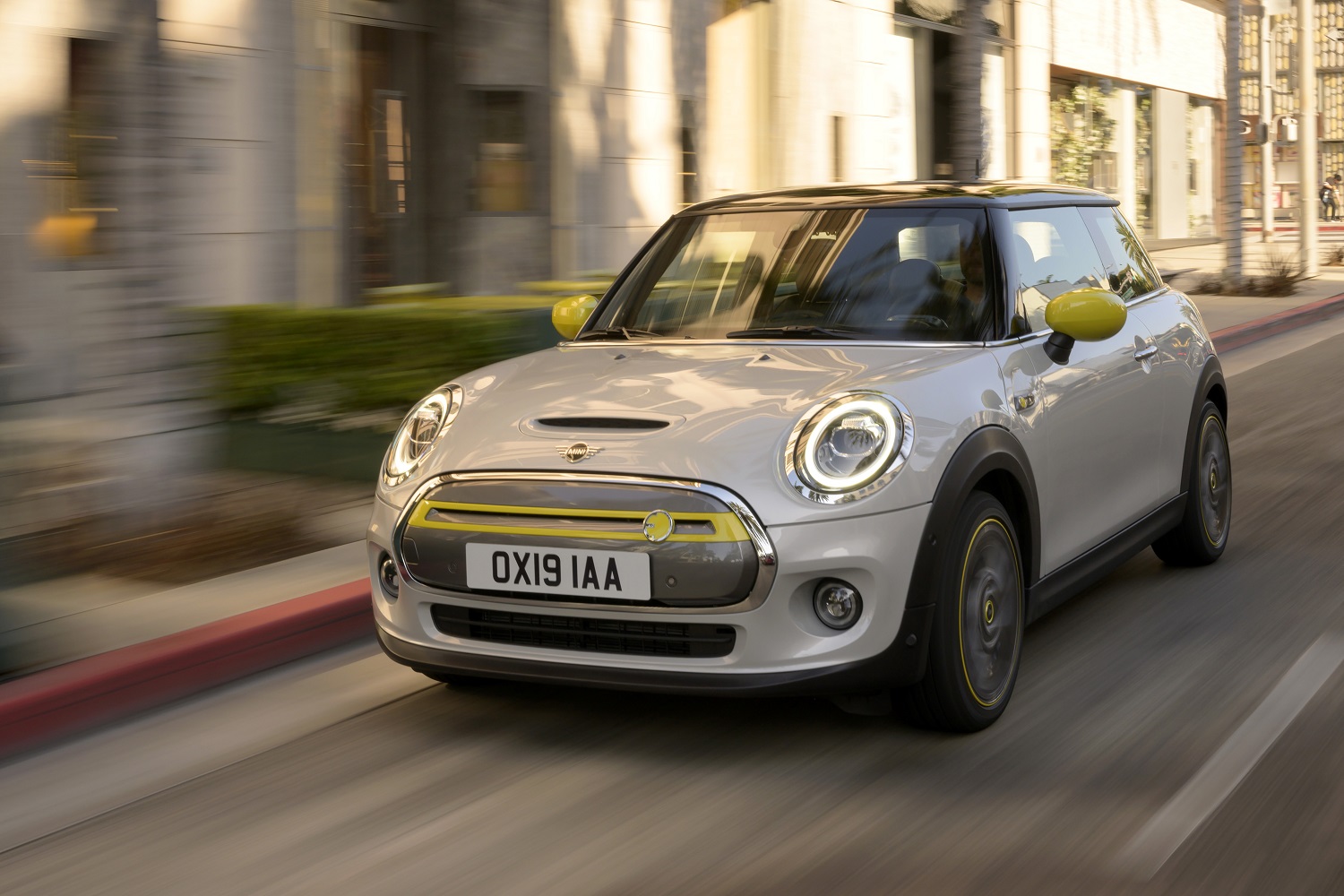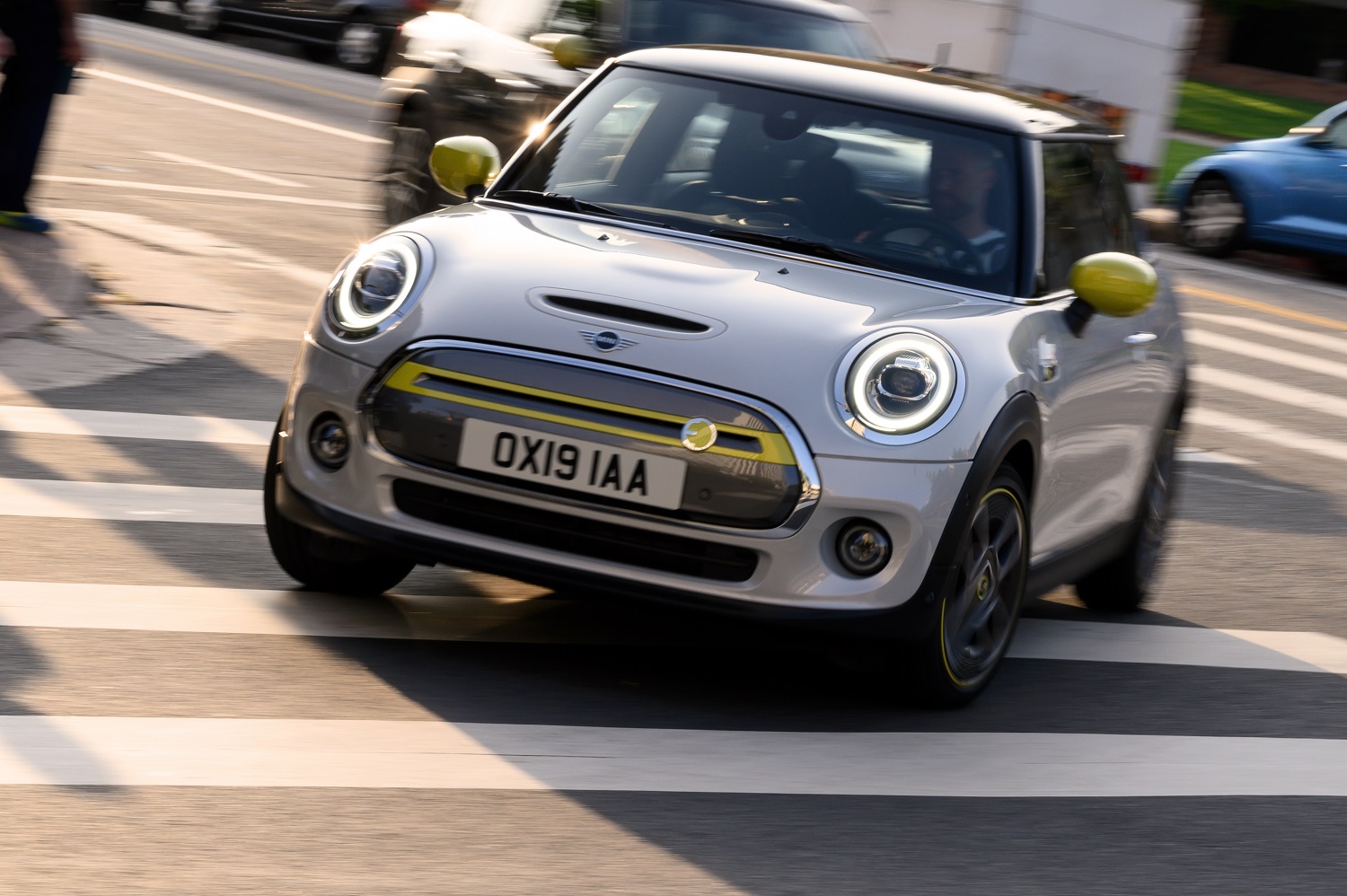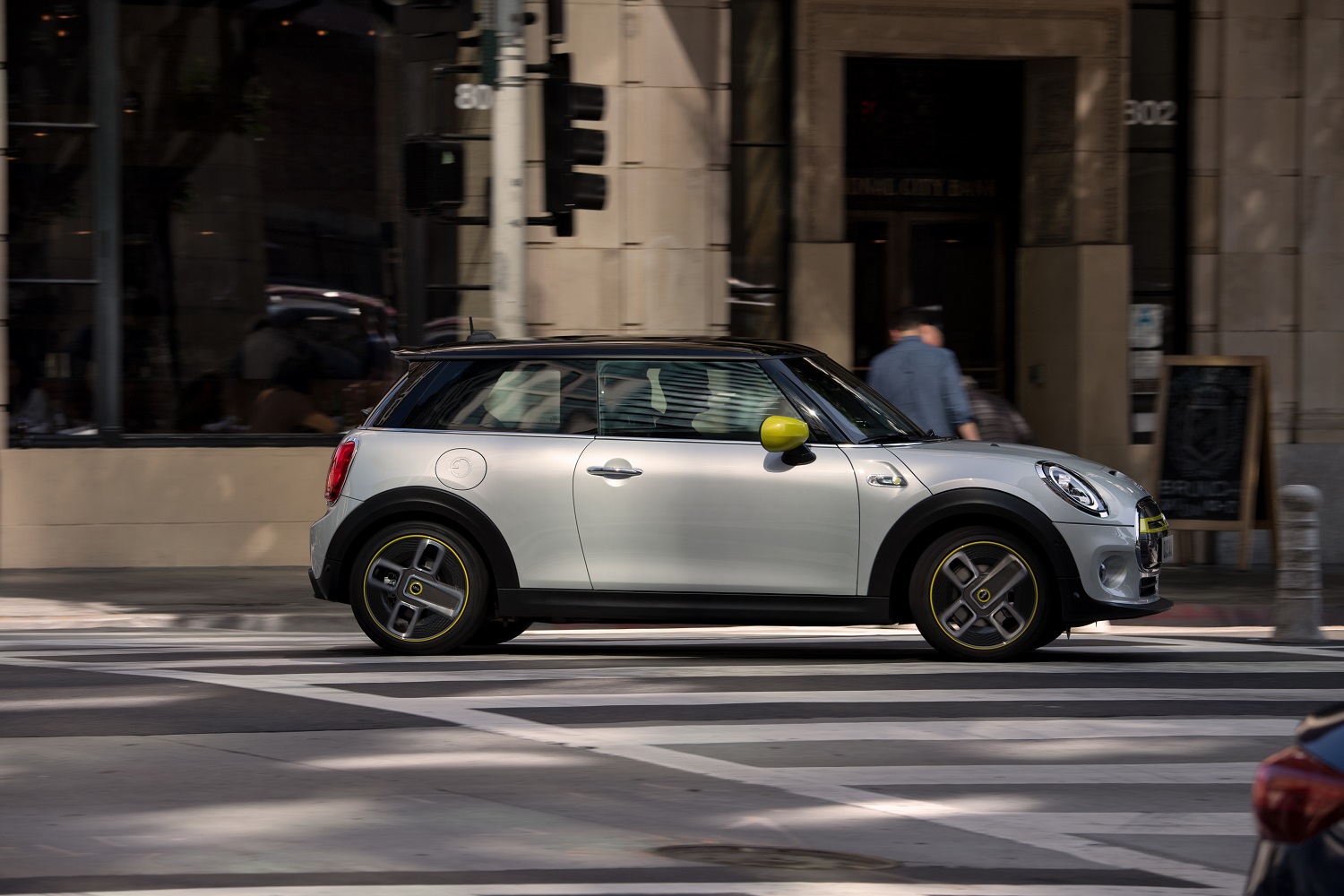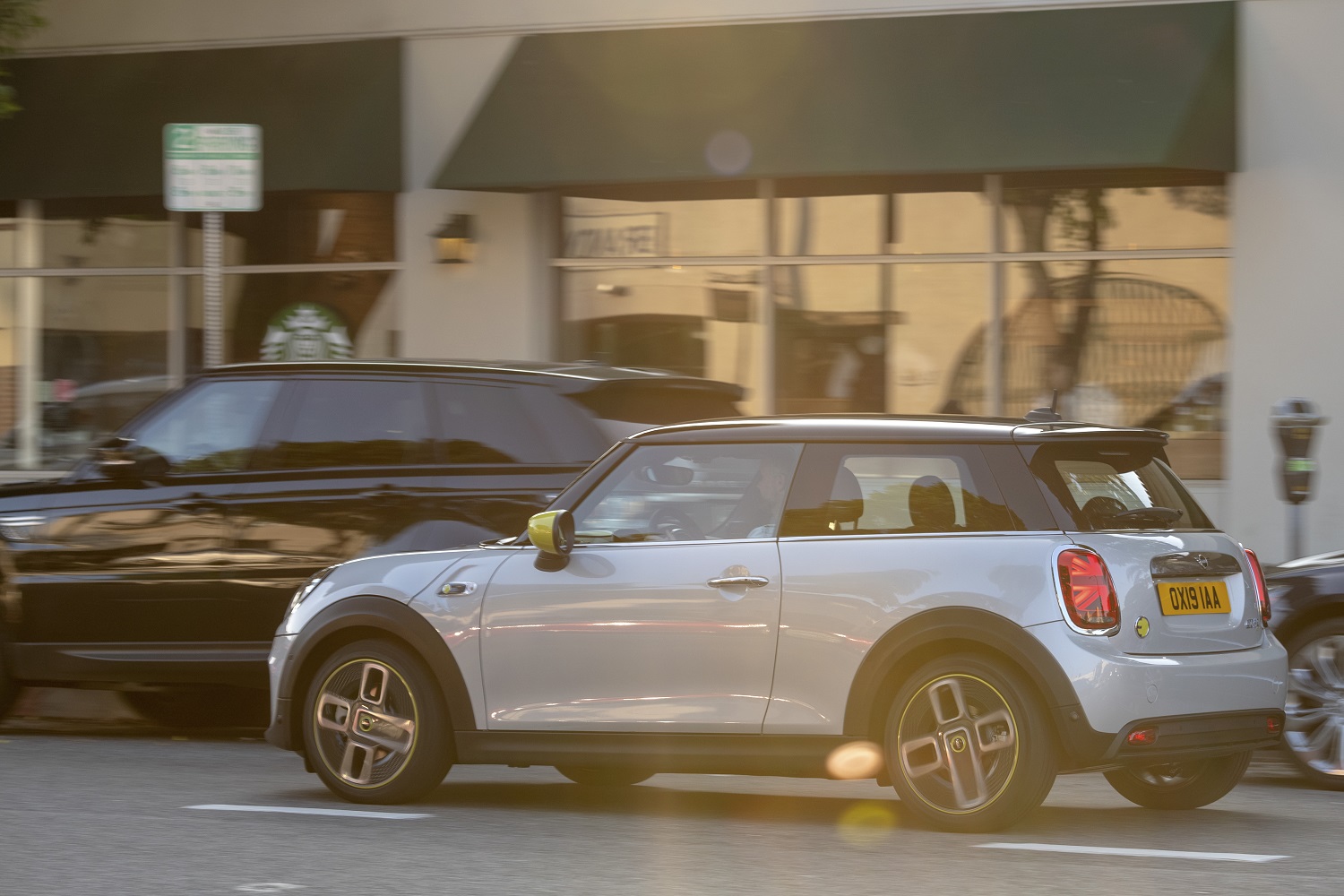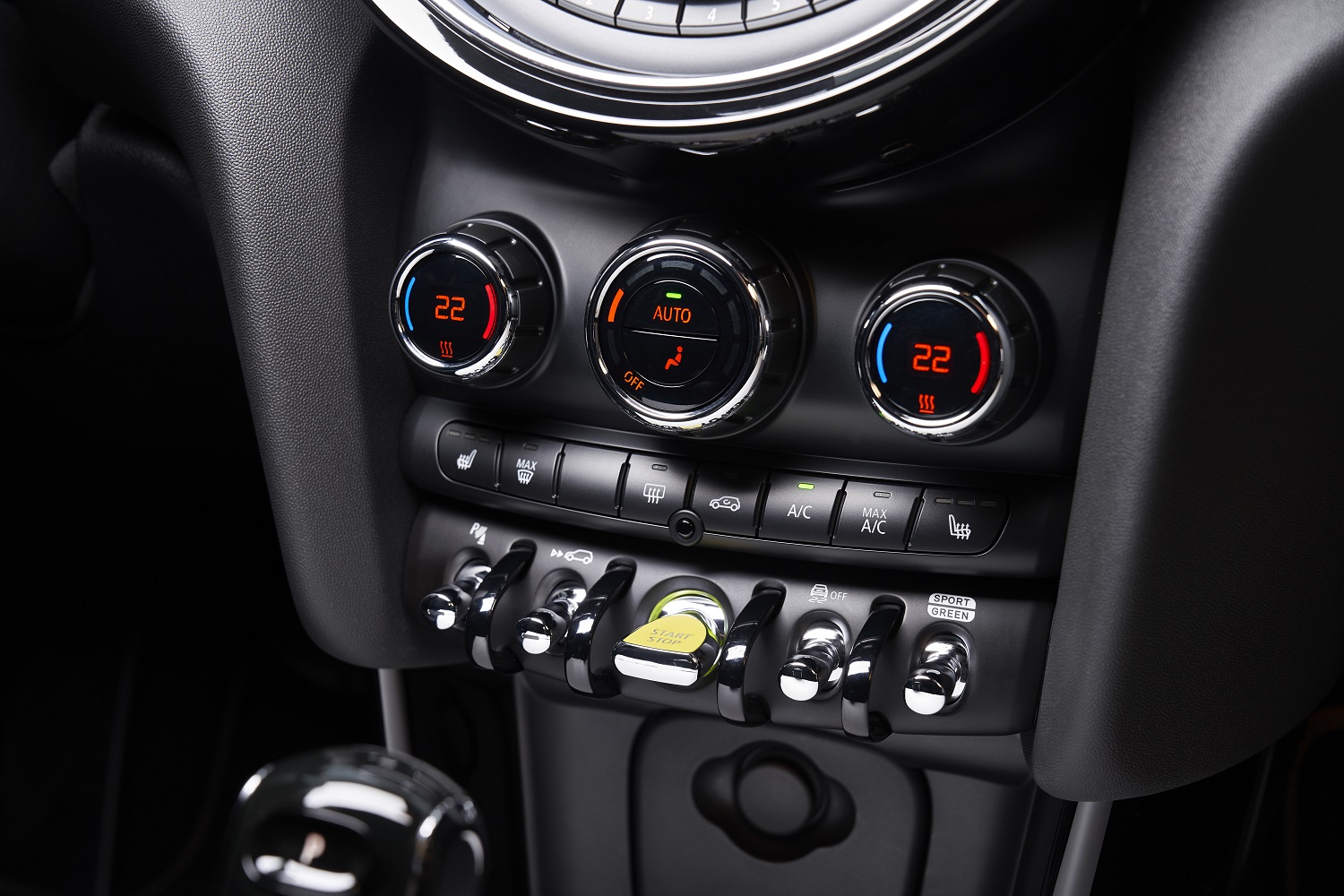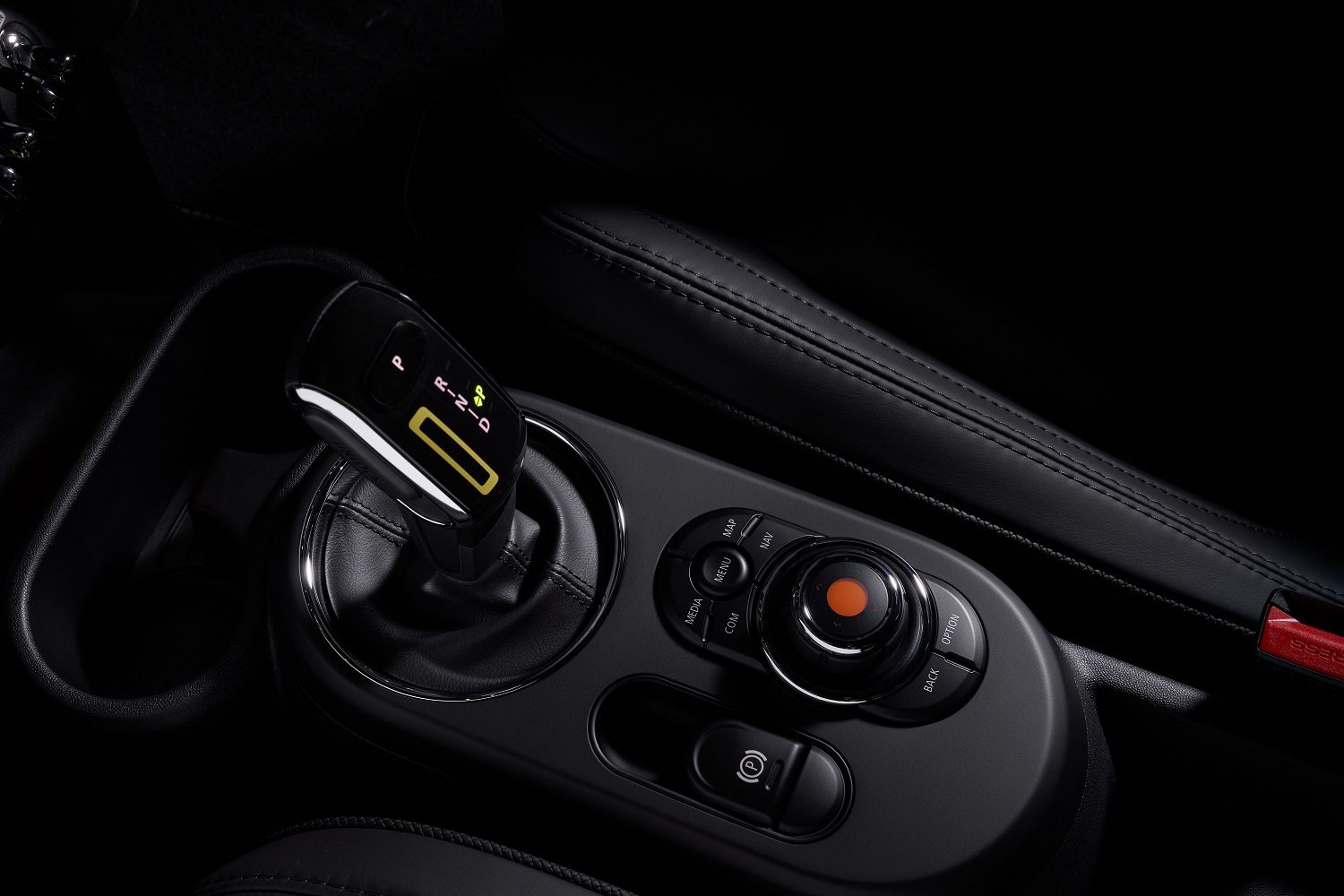Mini is putting an electric twist on the go-kart-like handling that has characterized most of its cars since 1959. The BMW-owned company unveiled the 2020 Cooper SE, its first series-produced electric model, as it reaffirmed its commitment to a zero-emissions future positioned at the intersection of electrification and driving fun.
We got our first look at the Cooper SE when Mini introduced a concept car named simply Electric during the 2017 Frankfurt Auto Show. The production version looks less futuristic than the design study; Mini took its styling in a more low-key direction. It nonetheless stands out from its gasoline-powered counterpart with a powertrain-specific front end accented by a plastic insert where you’d normally find a grille, and a few additional exclusive touches like the design of the alloy wheels plus a handful of yellow accents. It rides a little bit taller, too, because engineers needed to lift the body by nearly an inch to stuff a battery under it.
The electric powertrain consists of a motor similar to the one that powers the BMW i3, and a T-shaped, 32.6-kilowatt-hour lithium-ion battery pack integrated into the floor. This setup allowed engineers to electrify the Mini without compromising its cargo capacity. The motor zaps the front wheels with 181 horsepower and 199 pound-feet of torque, which is enough for a 7.3-second sprint from zero to 60 mph. Mini hasn’t published the SE’s driving range yet, but don’t expect to travel for more than 150 miles on a single charge. It was designed primarily for urban environments, not for road trips, and its range will reflect that.
There are pros and cons associated with adding a battery pack to a small hatchback like the Mini. On one hand, the pack is very heavy — it adds 319 pounds to the car, which is not an insignificant amount. The SE tips the scale at a noticeably un-Mini-like 1,400 pounds, which is about twice as much as the original model. On the other hand, it lowers the car’s center of gravity and places more of the weight over the rear axle.
Mini designed the battery pack with 50-kilowatt fast-charging in mind. When plugged into a compatible fast-charger, the Cooper SE siphons an 80% charge in approximately 35 minutes. It’s compatible with other chargers, buyers with a lot of time to kill can even plug it into a regular, 120-volt household outlet, and brake energy recuperation technology tops up the battery on-the-go by harvesting kinetic energy.
The model-specific infotainment system gives drivers vital information about the powertrain, like how much electricity it’s using in real-time, and the standard navigation software provides a list of available charging stations on a given route. Mini embedded a 6.5-inch touchscreen into the center console, as well a 5.5-inch screen behind the steering wheel. While Apple CarPlay is available, Mini doesn’t offer Android Auto, and it’s not going to make an exception for its first EV.
Made in Oxford, England, alongside the gasoline-powered model, the 2020 Mini Cooper SE will begin arriving in American showrooms in early 2020. The line up will include three trim levels named Signature, Signature Plus, and Iconic, respectively. Pricing information hasn’t been released yet, but we expect the model will cost approximately $30,000 before federal incentives enter the equation. One of its main rivals will be the battery-electric, second-generation Fiat 500 that will make its debut during the 2020 Geneva auto show.
While the parts that power the electric Mini mostly come from the aforementioned i3, Digital Trends learned from BMW that the brand’s future battery-powered models will use a scaled-down version of the motor that will power the iX3 crossover scheduled to make its debut in 2020. The SE is the first series-produced electric Mini, but you can bet the price of a well-equipped model that it won’t be the last.
Updated on July 9, 2019: Added full information about the Mini Cooper SE.
Editors' Recommendations
- 2024 Audi Q8 e-tron first drive review: 300-mile luxury EV cruiser
- Kia EV6 GT first-drive review: putting a little more fun into EVs
- 2023 Audi Q4 E-Tron first drive: the predictable and traditional EV SUV we need
- 2022 Rivian R1S first drive review: An EV SUV fit for an expedition or a drag race
- 2022 Volvo C40 Recharge first drive review: EV fashion statement

